Susan Elias
FedUKD: Federated UNet Model with Knowledge Distillation for Land Use Classification from Satellite and Street Views
Dec 05, 2022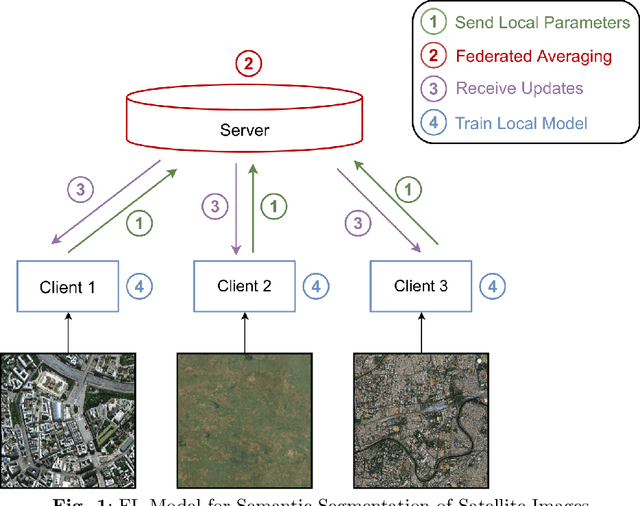

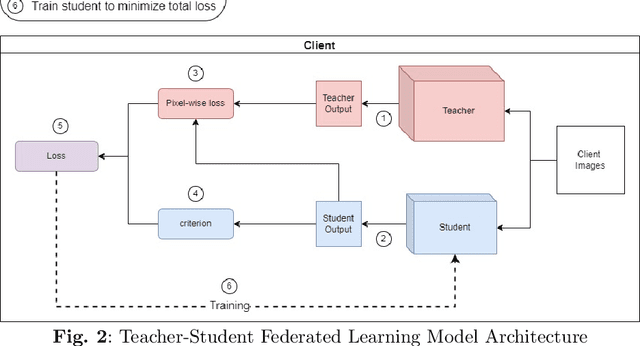
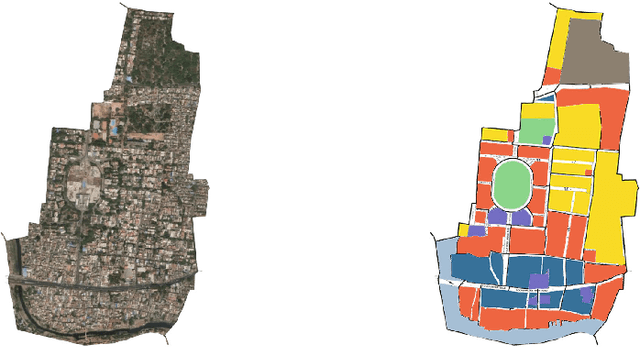
Abstract:Federated Deep Learning frameworks can be used strategically to monitor Land Use locally and infer environmental impacts globally. Distributed data from across the world would be needed to build a global model for Land Use classification. The need for a Federated approach in this application domain would be to avoid transfer of data from distributed locations and save network bandwidth to reduce communication cost. We use a Federated UNet model for Semantic Segmentation of satellite and street view images. The novelty of the proposed architecture is the integration of Knowledge Distillation to reduce communication cost and response time. The accuracy obtained was above 95% and we also brought in a significant model compression to over 17 times and 62 times for street View and satellite images respectively. Our proposed framework has the potential to be a game-changer in real-time tracking of climate change across the planet.
Predictive Analysis for Detection of Human Neck Postures using a robust integration of kinetics and kinematics
Mar 12, 2020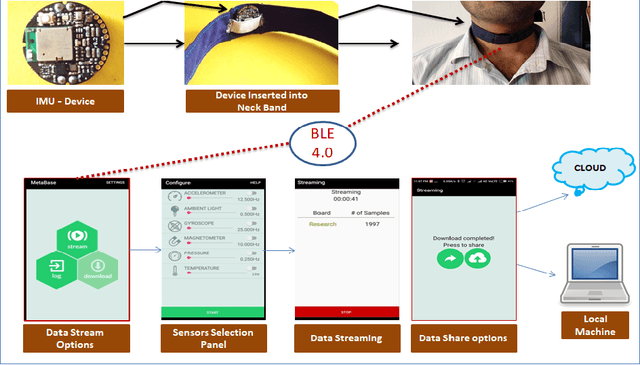

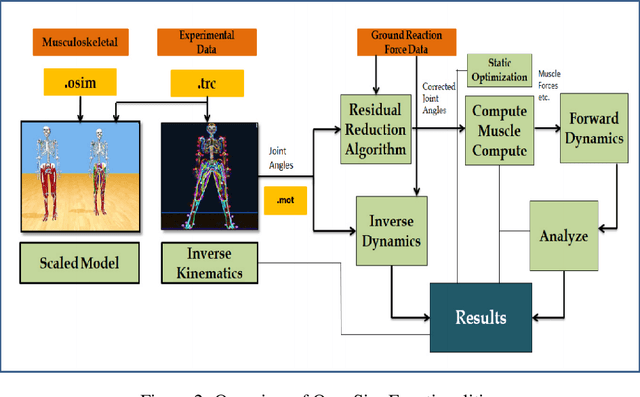

Abstract:Human neck postures and movements need to be monitored, measured, quantified and analyzed, as a preventive measure in healthcare applications. Improper neck postures are an increasing source of neck musculoskeletal disorders, requiring therapy and rehabilitation. The motivation for the research presented in this paper was the need to develop a notification mechanism for improper neck usage. Kinematic data captured by sensors have limitations in accurately classifying the neck postures. Hence, we propose an integrated use of kinematic and kinetic data to efficiently classify neck postures. Using machine learning algorithms we obtained 100% accuracy in the predictive analysis of this data. The research analysis and discussions show that the kinetic data of the Hyoid muscles can accurately detect the neck posture given the corresponding kinematic data captured by the neck-band. The proposed robust platform for the integration of kinematic and kinetic data has enabled the design of a smart neck-band for the prevention of neck musculoskeletal disorders.
A Data Set of Internet Claims and Comparison of their Sentiments with Credibility
Nov 22, 2019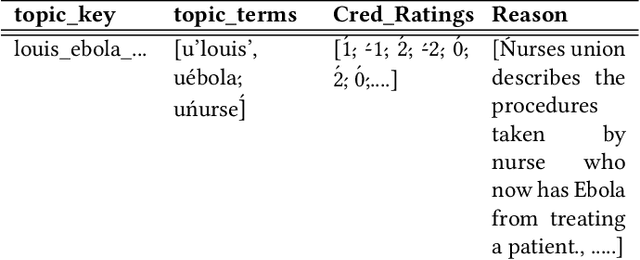
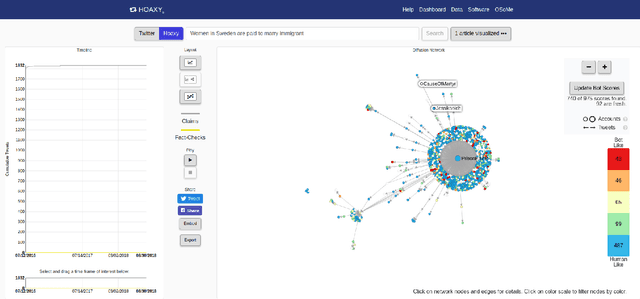
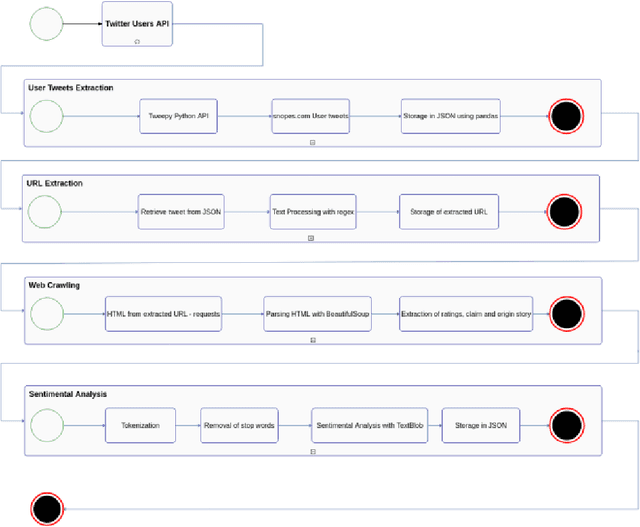
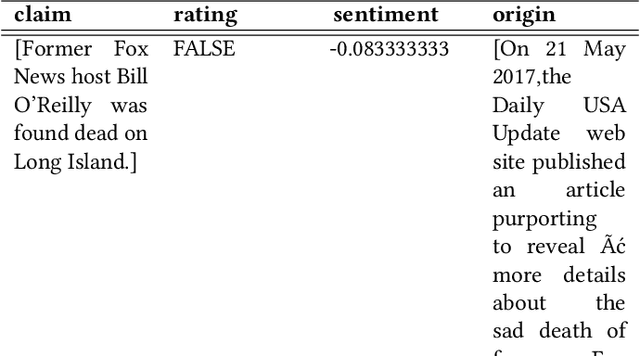
Abstract:In this modern era, communication has become faster and easier. This means fallacious information can spread as fast as reality. Considering the damage that fake news kindles on the psychology of people and the fact that such news proliferates faster than truth, we need to study the phenomenon that helps spread fake news. An unbiased data set that depends on reality for rating news is necessary to construct predictive models for its classification. This paper describes the methodology to create such a data set. We collect our data from snopes.com which is a fact-checking organization. Furthermore, we intend to create this data set not only for classification of the news but also to find patterns that reason the intent behind misinformation. We also formally define an Internet Claim, its credibility, and the sentiment behind such a claim. We try to realize the relationship between the sentiment of a claim with its credibility. This relationship pours light on the bigger picture behind the propagation of misinformation. We pave the way for further research based on the methodology described in this paper to create the data set and usage of predictive modeling along with research-based on psychology/mentality of people to understand why fake news spreads much faster than reality.
Trait of Gait: A Survey on Gait Biometrics
Mar 26, 2019

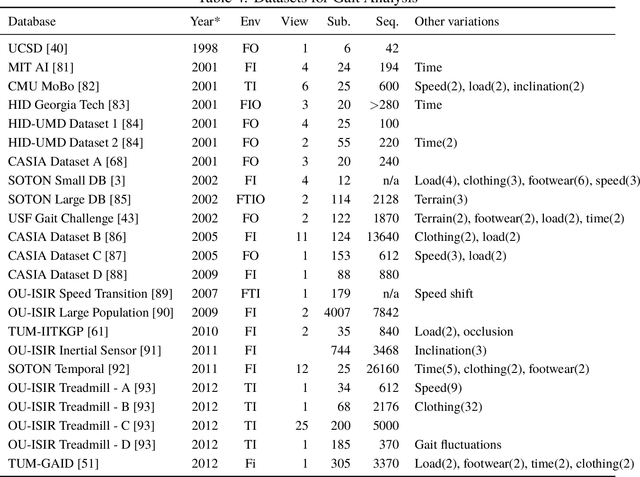

Abstract:Gait analysis is the study of the systematic methods that assess and quantify animal locomotion. The research on gait analysis has considerably evolved through time. It was an ancient art, and it still finds its application today in modern science and medicine. This paper describes how one's gait can be used as a biometric. It shall diversely cover salient research done within the field and explain the nuances and advances in each type of gait analysis. The prominent methods of gait recognition from the early era to the state of the art are covered. This survey also reviews the various gait datasets. The overall aim of this study is to provide a concise roadmap for anyone who wishes to do research in the field of gait biometrics.
View-invariant Gait Recognition through Genetic Template Segmentation
Jul 03, 2017
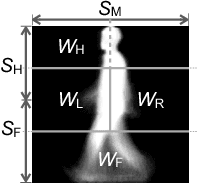


Abstract:Template-based model-free approach provides by far the most successful solution to the gait recognition problem in literature. Recent work discusses how isolating the head and leg portion of the template increase the performance of a gait recognition system making it robust against covariates like clothing and carrying conditions. However, most involve a manual definition of the boundaries. The method we propose, the genetic template segmentation (GTS), employs the genetic algorithm to automate the boundary selection process. This method was tested on the GEI, GEnI and AEI templates. GEI seems to exhibit the best result when segmented with our approach. Experimental results depict that our approach significantly outperforms the existing implementations of view-invariant gait recognition.
* Published in IEEE Signal Processing Letters. Received April 24, 2017, revised June 6, 2017, accepted June 10, 2017, published June 14, 2017
 Add to Chrome
Add to Chrome Add to Firefox
Add to Firefox Add to Edge
Add to Edge